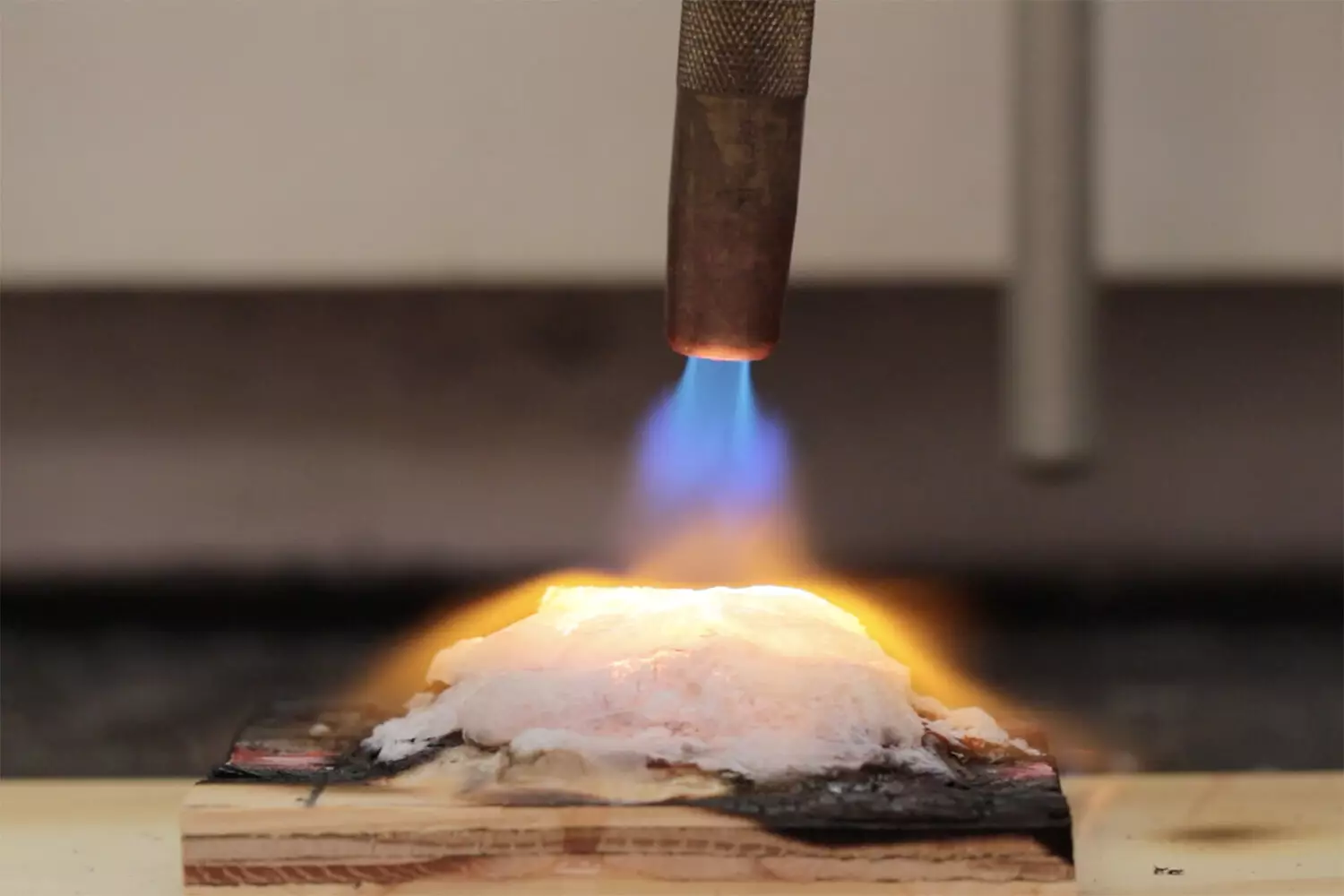As climate change intensifies, the landscape of wildfire management faces unprecedented challenges. Longer, hotter, and more unpredictable fire seasons demand a radical shift from traditional firefighting methods. Historically, firefighting efforts have been primarily reactive—fighting fires after they’ve already begun, often with limited success in extreme conditions. However, recent scientific advances suggest we are on the cusp of a proactive revolution that could dramatically change the game: protective gels that can be applied before fires threaten homes and critical infrastructure. These innovations not only aim to buy time but also to establish a formidable barrier that persists through the harshest conditions, reducing devastation and safeguarding vulnerable communities.
This technological breakthrough stems from the recognition that existing solutions have notable limitations. Commercial water-enhancing gels, while useful, tend to dry out within mere minutes under wildfire conditions, leaving structures unprotected when they are needed most. The novel gels developed at Stanford University attempt to overcome this barrier, offering a long-lasting, highly effective shield that remains functional even as the fire burns nearby. This marks a pivotal step towards resilient infrastructure and forest management strategies that prioritize prevention rather than solely relying on extinguishing fires once they spread beyond control.
Understanding the Scientific Breakthrough: From Gel to Insulation Fortress
The core innovation of these new gels lies in their adaptive response to intense heat and dry environments. Traditional water-absorbent polymers, akin to those found in diapers, absorb water and form a protective film around structures when sprayed. Nonetheless, their efficacy diminishes rapidly as the water evaporates, especially under the extreme conditions of wildfires—temperatures soaring towards 100°C, sustained high winds, and near-zero humidity.
The research team, led by Eric Appel, has engineered a gel that transcends these limitations by transforming into a different and more durable form when exposed to heat. Instead of simply drying out, the gel’s cellulose-based polymer interacts with silica particles embedded within it. When subjected to fire, the water in the gel vaporizes, and the remaining cellulose combusts. What’s left behind are silica particles that fuse into a solid, foam-like aerogel—a material renowned for its exceptional insulation and low weight. This aerogel functions as a thermal barrier, scattering and dissipating heat rather than transmitting it, thereby shielding underlying surfaces from ignition.
This transformation is akin to an organic soft gel hardening into an insulating fortress of silica. It’s a sophisticated, multi-stage process that ensures protection persists long after the initial application—an adaptive response tailored to the relentless nature of wildfires. Such a feature is invaluable because it extends the window of protection, providing homeowners, firefighters, and infrastructure managers with more time to evacuate or reinforce defenses.
The Potential Impact: From Laboratory Tests to Real-World Applications
Among the most compelling aspects of this innovation is its proven efficacy in rigorous testing. In laboratory experiments, the gels were applied to plywood panels, which were then exposed to high-temperature flames from a gas torch—conditions surpassing those typically found in wildfires. Traditional gels provide protection for less than two minutes—a fleeting reprieve. By contrast, the new gels endured over seven minutes before the material began to char, demonstrating a dramatic enhancement in fire resistance.
The significance of this extended protection window cannot be overstated. In real-world scenarios, every additional second counts, enabling emergency services and residents to evacuate safely or implement additional fire mitigation tactics. Moreover, the gels are designed to be environmentally friendly, made from non-toxic components already approved for use by agencies like the U.S. Forest Service. They are also biodegradable, breaking down naturally through soil microbes once the threat passes, thus minimizing environmental impact.
Importantly, these gels can be applied using standard spraying equipment, making their deployment feasible on a wide scale, whether on individual structures, vital infrastructure, or even vegetation with prior treatment to prevent ignition. The broader implication is a shift toward preemptive defense strategies—rather than waiting until a fire ignites and spreads uncontrollably, communities could employ these gels as a frontline barrier, dramatically reducing the chance of damage and loss.
Beyond the Surface: Broader Implications for Fire Management
This breakthrough opens doors to far-reaching possibilities in wildfire management, blending material science with ecological stewardship. The gels’ ability to remain effective through extreme conditions means they could be deployed in high-risk zones well in advance of fire seasons, acting as a first line of defense for homes, power plants, and other critical infrastructure. Coupled with traditional firefighting efforts, these gels could greatly diminish the severity of wildfire impacts, saving lives, reducing economic losses, and conserving ecological resources.
Furthermore, their customizable formulation means they could be tailored to different scenarios—adjusting thickness, adhesion, and insulating properties to suit specific needs. For instance, urban areas could incorporate gel treatments around vulnerable buildings, while forest managers might deploy them strategically on trees and dense vegetation. The adaptability of this technology could revolutionize how we approach fire prevention, shifting from a purely reactive stance to an integrated, proactive defense system.
The development of such advanced materials underscores an optimistic yet pragmatic outlook: innovation driven by necessity can forge potent solutions that complement existing methods. However, critical self-assessment is essential. As promising as these gels are, scalability and real-world application pose challenges, including distribution logistics, costs, and long-term environmental impacts that must be thoroughly evaluated. While initial results are encouraging, rigorous field trials and iterative refinements are necessary before they can become a standard component of wildfire mitigation.
In the face of a warming planet, the adoption of such groundbreaking technologies could mark a turning point—transforming wildfire management from a reactive burden into an elegant mosaic of preventative, resilient measures. The true test will be in their ability to be widely implemented, affordable, and genuinely effective under the complex, unpredictable conditions of natural wildfires. If successful, these innovations could redefine our relationship with fire, turning it from an uncontrollable force into something we can more confidently contain and manage.


Leave a Reply